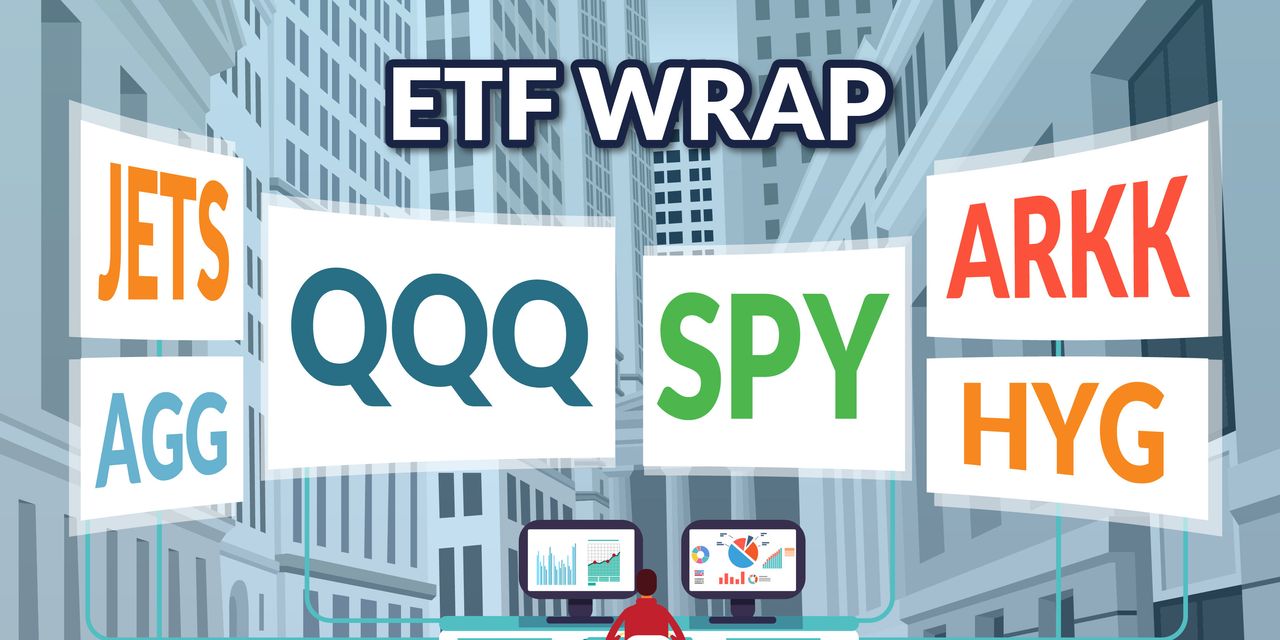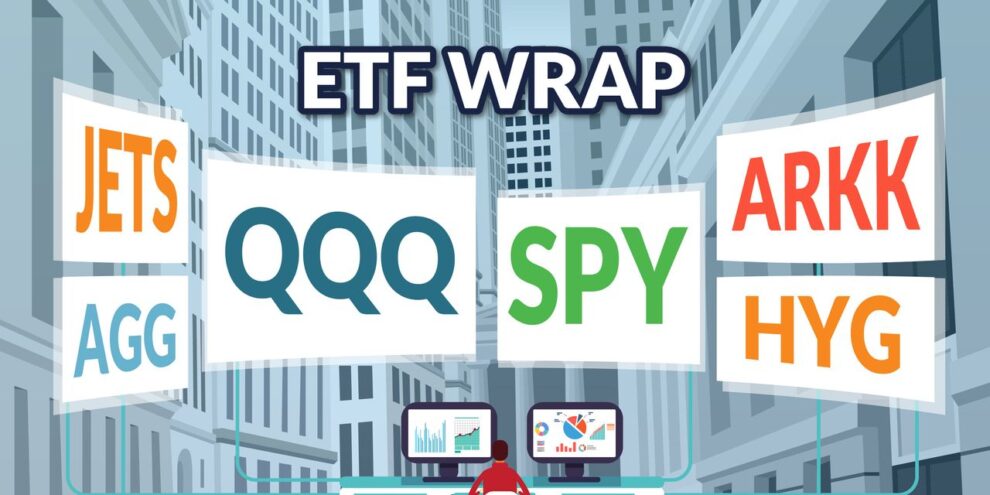
Hi! For this week’s ETF Wrap, I spoke with Gargi Chaudhuri, BlackRock’s head of iShares investment strategy for the Americas, about which exchange-traded funds investors might consider in a slowing economy amid concerns over high inflation.
Please send feedback and tips to [email protected]. You can also follow me on Twitter at @cidzelis.
Investors are worried about a slowing economy and stubbornly high inflation.
In this environment, BlackRock favors exchange-traded funds focused on shorter-dated fixed income, as well as equity ETFs that invest in “quality companies with strong balance sheets and pricing power,” according to Gargi Chaudhuri, the firm’s head of iShares investment strategy for the Americas.
“Having a little bit of that defensive twist in your portfolio” will help it “hold up better in a slowing economy,” she said in a phone interview. Also, “we are recommending that investors gravitate toward minimum volatility.”
For example, in an emailed note this week Chaudhuri pointed to the iShares MSCI USA Min Vol Factor ETF USMV, -1.57% and the iShares U.S. Healthcare Providers ETF IHF, -1.44% as options for investors to consider. Both funds have declined almost 11% this year based on Thursday afternoon trading, holding up better than the S&P 500’s drop of more than 14%, FactSet data show, at last check.
As for fixed-income ETFs, she suggested the iShares 1-3 Year Treasury Bond SHY, -0.07%, the iShares Short Treasury Bond ETF SHV, -0.01% and the iShares 1-5 Year Investment Grade Corporate Bond ETF IGSB, -0.19%. The iShares Short Treasury Bond ETF has held up the best of the three, with a small decline of 0.2% this year, according to FactSet data on Thursday afternoon.
“Ultimately, I think that the Fed will take a less aggressive stance in their policy path than what is currently priced into the market, Chaudhuri said by phone. “When that happens,” she said, “front-end interest rates are likely to come down.” That should translate into higher prices for shorter-dated fixed income, benefiting holders of the debt, particularly when looking at the one -year to three year bonds, she said.
In her note, Chaudhuri said “we believe investors should focus on the front end of the yield curve as the Fed begins quantitative tightening.” Under quantitative tightening, or QT, the Federal Reserve is reducing the size of its balance sheet by letting bonds that it holds roll off as they mature.
The Fed plans to reduce its holdings of Treasurys by about $700 billion over the next 12 months under its QT program, according to Chaudhuri. “These Treasuries will need to find a different home, and the consequent supply pressures should move yields higher,” her note says. “Much of that is going to be felt in the longer end of the curve,” she said by phone.
In May, fixed income saw the largest monthly net inflow since June 2020, according to her note. “Short duration funds made up 58% of the inflows as investors continue to gravitate to high quality fixed income as a way of stepping out of cash and earning carry,” Chaudhuri wrote.
Meanwhile, investors continue to worry about soaring inflation.
The iShares 0-5 Year TIPS Bond ETF STIP, +0.03% may help investors hedge against rising inflation, according to Chaudhuri. “We still think that inflation can continue to surprise to the upside in the near term,” she said by phone.
Exchanged-traded funds such as the iShares U.S. ETF Trust iShares GSCI Commodity Dynamic Roll Strategy ETF COMT, -0.26% and iShares Bloomberg Roll Select Commodity Strategy ETF CMDY, +0.10% provide other ways of hedging against rising inflation, her note shows.
Chaudhuri wrote that inflation data will be “crucial” to the path of Fed policy, with the next reading on the consumer-price index scheduled for Friday morning.
BlackRock expects the Fed will next week raise its benchmark interest rate by 50 basis points, Chaudhuri said by phone. “They’re definitely sounding very hawkish,” she said, but expects the central bank could avoid a recession by sounding “less hawkish” heading into next year.
In the meantime, “we remain underweight cash-flow challenged technology and industrials as higher rates and slower growth should weigh on lower quality and cyclical names,” wrote Chaudhuri.
As usual, here’s your look at the top and bottom performing ETFs over the past week through Wednesday, according to FactSet data.
The good…
| Best performers | %Performance |
| KraneShares CSI China Internet ETF KWEB, -6.69% | 12.2 |
| EMQQ The Emerging Markets Internet & Ecommerce ETF EMQQ, -5.07% | 7.5 |
| WisdomTree China ex-State-Owned Enterprises Fund CXSE, -4.24% | 7.1 |
| SPDR S&P Biotech ETF XBI, -3.72% | 6.5 |
| iShares MSCI China ETF MCHI, -3.74% | 5.9 |
| Source: FactSet data through Wednesday June 8, excluding ETNs and leveraged products. Includes NYSE, Nasdaq and Cboe traded ETFs of $500 million or greater. |
…the bad
New ETFs:
- The Newday Ocean Health ETF AHOY, -1.30%, which began trading this week, will invest in companies that are combating ocean pollution and other threats to marine health.
See: New ETF for World Oceans Day invests in curbing plastic and smarter fishing
- Putnam Investments announced June 8 that in the coming months it plans to launch fixed-income and quantitative-equity ETFs that focus on environmental, social and governance criteria. The funds, which first need to complete the regulatory process, include the Putnam ESG Core Bond ETF, Putnam ESG High Yield ETF, Putnam ESG Ultra Short ETF, Putnam PanAgora ESG International Equity ETF and Putnam PanAgora ESG Emerging Markets Equity ETF.








